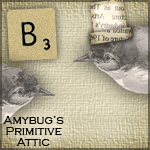Those are pictures of your trip to *Herrenchiemsee*
I found the descripton of this place on the internet...I thought it is pretty ineresting :) We drove with a bus there, it was cold but it didn't rain :)
Herrenchiemsee is a complex of royal buildings on the Herreninsel, an island in the middle of the Chiemsee, Bavaria's largest lake, 60 km south east of Munich. The Augustine Monastery Herrenchiemsee, later converted into the Old Palace (Altes Schloss) and Herrenchiemsee Palace, also known as the New Palace (Neues Schloss) are the most famous of these buildings and are the biggest of Ludwig II of Bavaria's palaces.
Augustine Monastery Herrenchiemsee (Old Palace)
Ludwig II acquired the Augustine monastery in 1873 and had the rooms converted for his own private use. This later became known as the Old Palace. In 1948, the Constitutional Convention of West Germany met here to prepare the work for the founding of the Federal Republic of Germany.
Ludwig II acquired the Augustine monastery in 1873 and had the rooms converted for his own private use. This later became known as the Old Palace. In 1948, the Constitutional Convention of West Germany met here to prepare the work for the founding of the Federal Republic of Germany.
Herrenchiemsee Palace (New Palace)
The New Palace was designed by Christian Jank, Franz Seitz, and Georg Dollman and built between 1878 and 1885. Between 1863 and 1886 a total of 16,579,674 Marks[1] was spent constructing Herrenchiemsee. An 1890 '20 Mark' gold coin contained 0.2304 troy ounce (7.171 g) of gold. Therefore, 16,579,674 Marks would equate to 190,998 oz of gold, which at recent gold prices (March 2007) is worth approximately £70,500,000GBP or (August 2007) $125,400,000USD. The Grundgesetz (Constitution) of postwar Germany was largely drafted here in August 1948. Herrenchiemsee was one of the featured locations in the 1995 computer game The Beast Within: A Gabriel Knight Mystery, set in Bavaria with a storyline heavily involving Ludwig II and Wagner.
Front of the New Palace
The New Palace is, in a sense, a monument to Ludwig's adoration of Louis XIV. In the great hall of mirrors of the palace the ceiling is painted with 25 tableaux showing Louis XIV at his best. (Some texts refer to the main building as Herrenchiemsee, forgetting the other smaller buildings on the island.)
It was to have been an equivalent to the Palace of Versailles, but only the central portion was built before the king died, leaving 50 of the 70 rooms of the palace unfinished. It was never meant to be a perfectly exact replica of Versailles and in several places surpasses it. The great hall of mirrors is longer than its equivalent in Versailles, and the dining room has a huge chandelier of Meissen porcelain, the largest in the world. The building also benefits from nearly two centuries of technological progress. The original Versailles palace did not have a single toilet. The only running water was outside in the fountains. King Ludwig's "copy" has more modern facilities, with a toilet and a large heated bathtub. Also, unlike Versailles, it was built on an island and is now only accessible by a small ferry. It is because of this that Herrenchiemsee and the Neues Palais are not as accessible or as famous as Neuschwanstein castle, becoming a secondary castle in their country.
The New Palace was designed by Christian Jank, Franz Seitz, and Georg Dollman and built between 1878 and 1885. Between 1863 and 1886 a total of 16,579,674 Marks[1] was spent constructing Herrenchiemsee. An 1890 '20 Mark' gold coin contained 0.2304 troy ounce (7.171 g) of gold. Therefore, 16,579,674 Marks would equate to 190,998 oz of gold, which at recent gold prices (March 2007) is worth approximately £70,500,000GBP or (August 2007) $125,400,000USD. The Grundgesetz (Constitution) of postwar Germany was largely drafted here in August 1948. Herrenchiemsee was one of the featured locations in the 1995 computer game The Beast Within: A Gabriel Knight Mystery, set in Bavaria with a storyline heavily involving Ludwig II and Wagner.
Front of the New Palace
The New Palace is, in a sense, a monument to Ludwig's adoration of Louis XIV. In the great hall of mirrors of the palace the ceiling is painted with 25 tableaux showing Louis XIV at his best. (Some texts refer to the main building as Herrenchiemsee, forgetting the other smaller buildings on the island.)
It was to have been an equivalent to the Palace of Versailles, but only the central portion was built before the king died, leaving 50 of the 70 rooms of the palace unfinished. It was never meant to be a perfectly exact replica of Versailles and in several places surpasses it. The great hall of mirrors is longer than its equivalent in Versailles, and the dining room has a huge chandelier of Meissen porcelain, the largest in the world. The building also benefits from nearly two centuries of technological progress. The original Versailles palace did not have a single toilet. The only running water was outside in the fountains. King Ludwig's "copy" has more modern facilities, with a toilet and a large heated bathtub. Also, unlike Versailles, it was built on an island and is now only accessible by a small ferry. It is because of this that Herrenchiemsee and the Neues Palais are not as accessible or as famous as Neuschwanstein castle, becoming a secondary castle in their country.






















0 comments:
Post a Comment